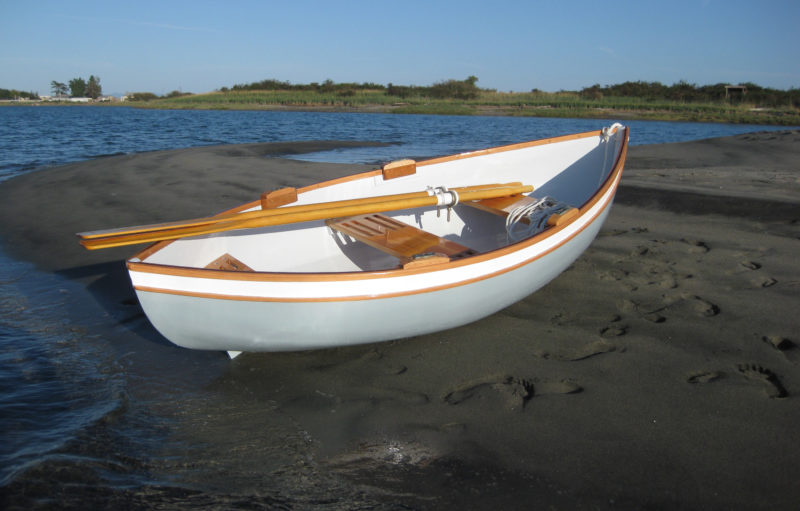 all photographs by or courtesy of the author
all photographs by or courtesy of the authorWhen Sean’s friend Robert saw the lines for the little double ender, he said: “We have to build that!” And together they did.
Sean Russell of Comox, British Columbia, has been writing books —the Charles Hayden historical naval fiction novels—and designing boats, lots of them, for years. He started drawing lines by hand and then worked with CAD programs—first Hulls, then Prolines, and finally Delftship. He set out to do his own design of every type of rowing and small sailing boat, and to date he has amassed a catalog of several hundred designs.
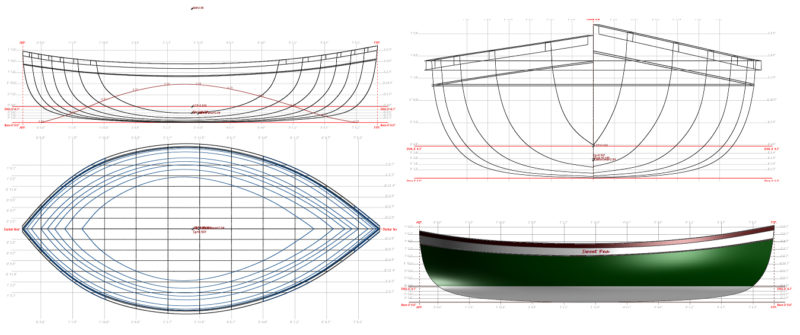
Sean’s drawings for SWEET PEA
Sean liked the look of the Beach Pea—a 13′ peapod designed by Doug Hylan for glued-lapstrake plywood construction—and decided to draw up a peapod of his own. Inspired too by Baby Boat, a 6′11″ double-ender made from a single sheet of plywood, Sean designed his peapod to be a diminutive 8′ 1-1/2″ by 45″, sized for kids to row. He drew the waterplane as large as possible to give the boat good carrying capacity, and made the bottom rather flat to keep the initial stability high, an important consideration for a boat without a transom to help steady it.
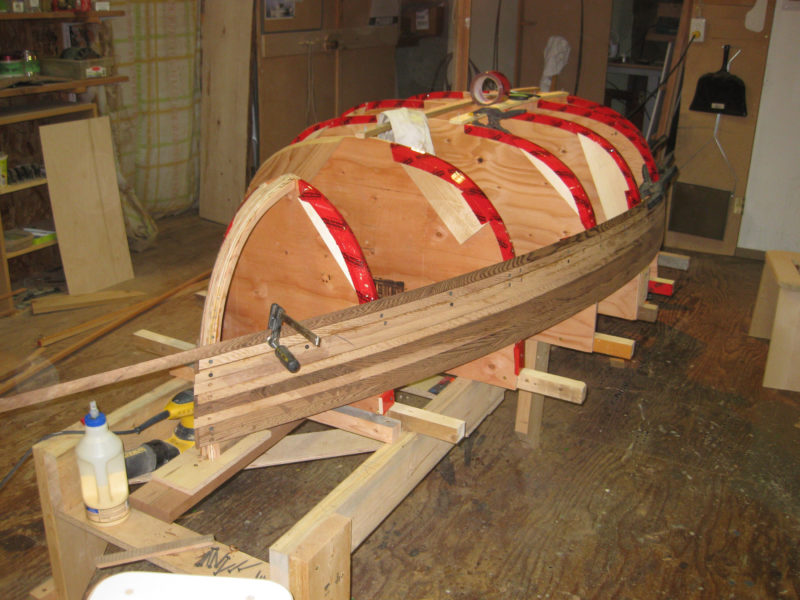
The molds were cut from computer-generated patterns; once they were set up on the strongback the strips went on perfectly fair.
Sean showed his drawings to his friend Robert Hale, an avid builder and restorer of wooden boats. Robert’s reaction was enthusiastic: “We have to build that!” The two were soon in Robert’s shop building SWEET PEA, the first of Sean’s designs to come to life, his first work of non-fiction you might say. SWEET PEA would be strip-built, but neither of them had any experience with the method, so the learning curve was steep. They sawed strips from red cedar planks and milled them with bead-and-cove edges. The strips set parallel to the sheer got them off to an easy start, but as they progressed along the stems and toward the turn of the bilge, the boat’s short length and wide beam proved a difficult form to work with.

Long shop-made sanding boards like the one resting on the hull played an important role in getting the strip-planking faired before sheathing it with fiberglass.
Applying strips in a chevron pattern at the stern got them around most challenging curves, and a large diamond of strips parallel to the keel finished the planking. “I would not recommend this as a first-time project,” Sean warned, “It was quite a challenge.”
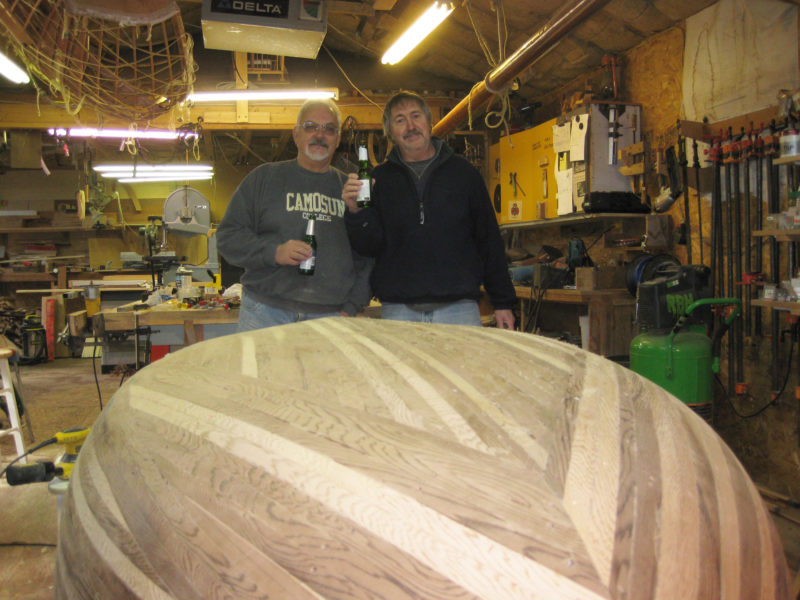
Robert(left) and the author take a break after finishing the planking. The bends on such a short, chubby boat were fairly extreme, especially around the stern, which was blunter than the bow. Laying the strips at a chevron-like angle was the only way to get them to take the curve.
The hull was sheathed inside and out with 6-oz fiberglass cloth set in epoxy. Douglas-fir was used for the inwales, outwales, sheer guards, and seats, and oak for oarlock pads with blocks of cherry as bases. The seats, glued up with strips of fir, are admittedly “quite elaborate” and strong, but the three of them weigh 15 lbs, a quarter of the boat’s 60-lb overall weight.
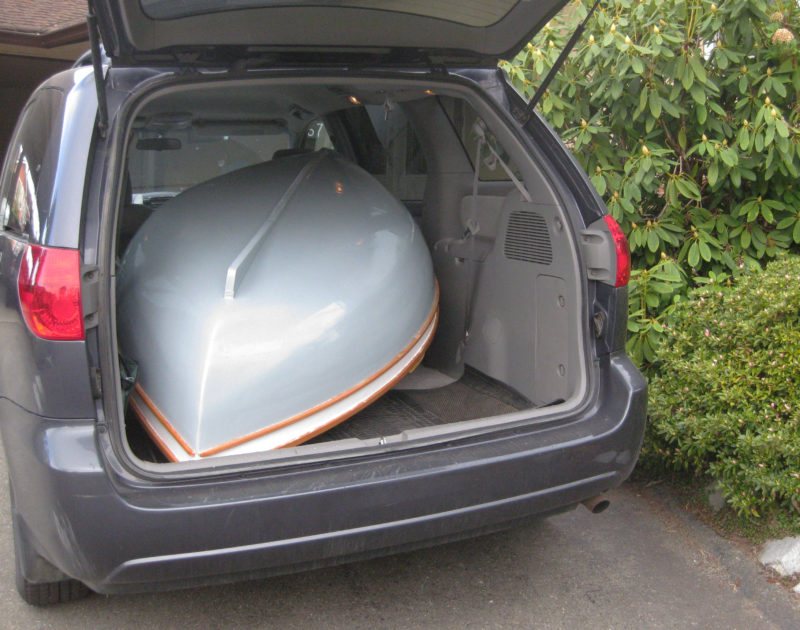
Tucked in van, SWEET PEA is ready to launch. The keel and skeg give the hull good tracking ability while under way.
Sean has carried and launched the boat solo, and while the weight is manageable, the size is a bit awkward for one; with two people, carrying is a breeze. While SWEET PEA could easily be transported on a roof rack, Sean just loads her in the back of his van.
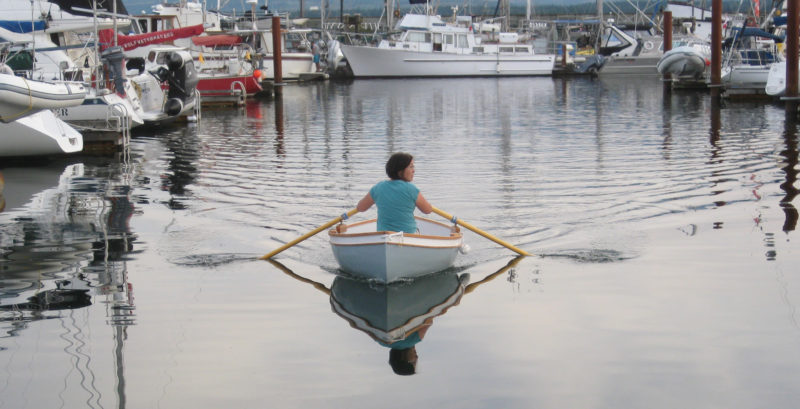
The only things SWEET PEA has in common with a peapod are the two pointy ends. Her name is a reference to a character in the old Popeye cartoons.
With a pair of 7′ straight-bladed oars SWEET PEA “rows beautifully, doesn’t hobbyhorse, tracks perfectly, and takes no effort to make her go.” The boat carries two adults with ease and fares well in waves up to 2′ and big powerboat wakes. When Sean and his wife go sailing in their bigger boat, SWEET PEA rides on the mother ship’s deck, and gets launched and retrieved with the aid of a halyard.
While Sean designed SWEET PEA as a boat for kids, it turned out the boat was quite capable of serving grown-up requirements, and he hasn’t yet given any kids a shot at sea trials. They’ll have to wait their turn.![]()
Have you recently launched a boat? Please email us. We’d like to hear about it and share your story with other Small Boats Monthly readers.
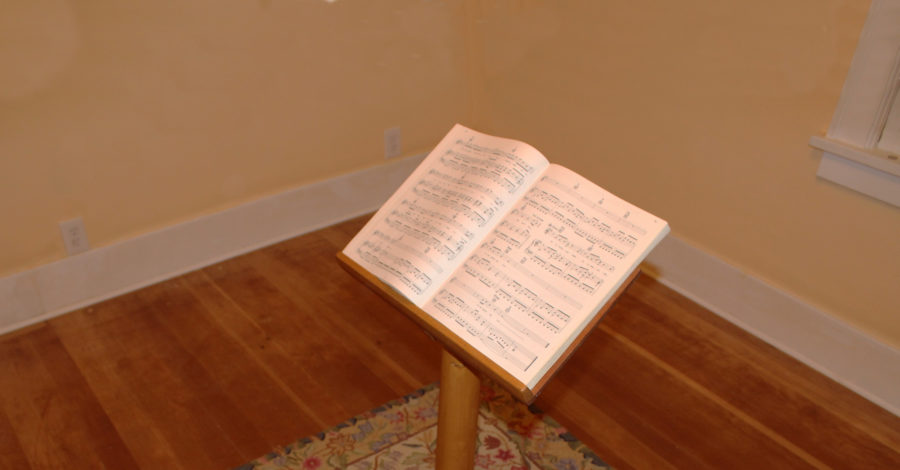
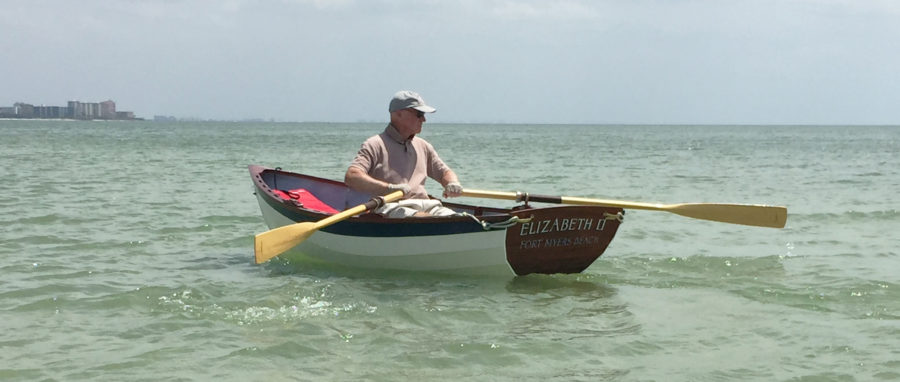
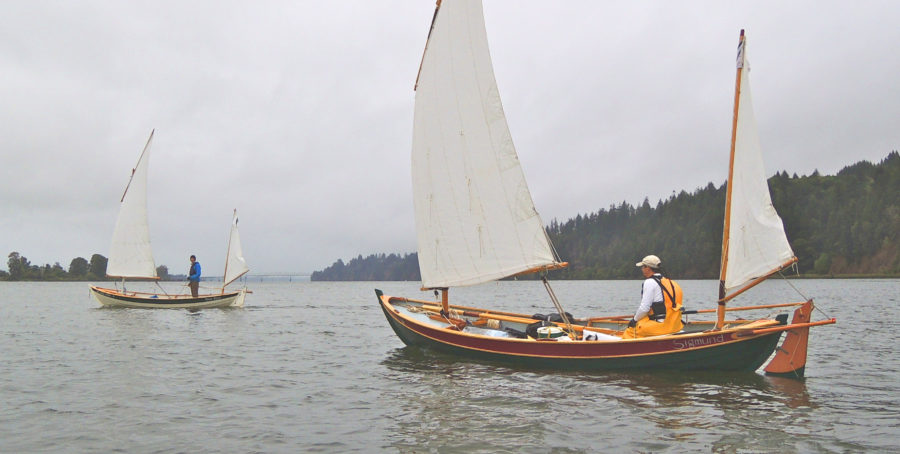
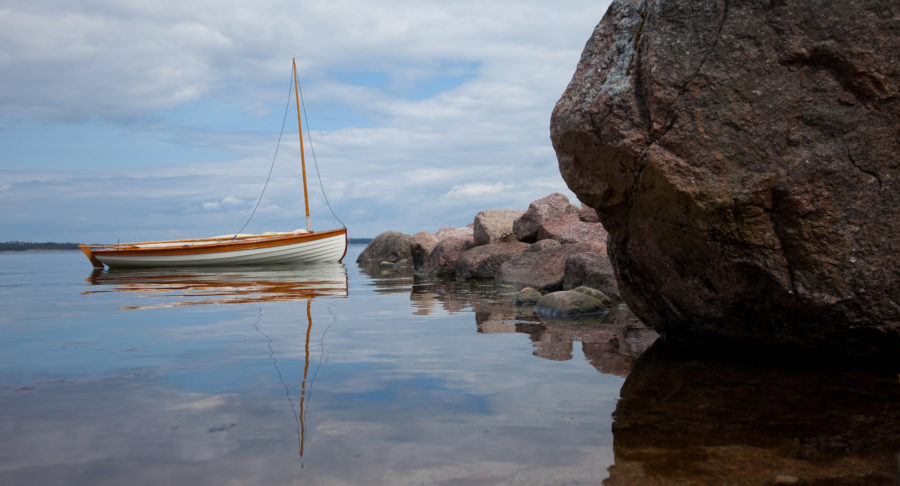
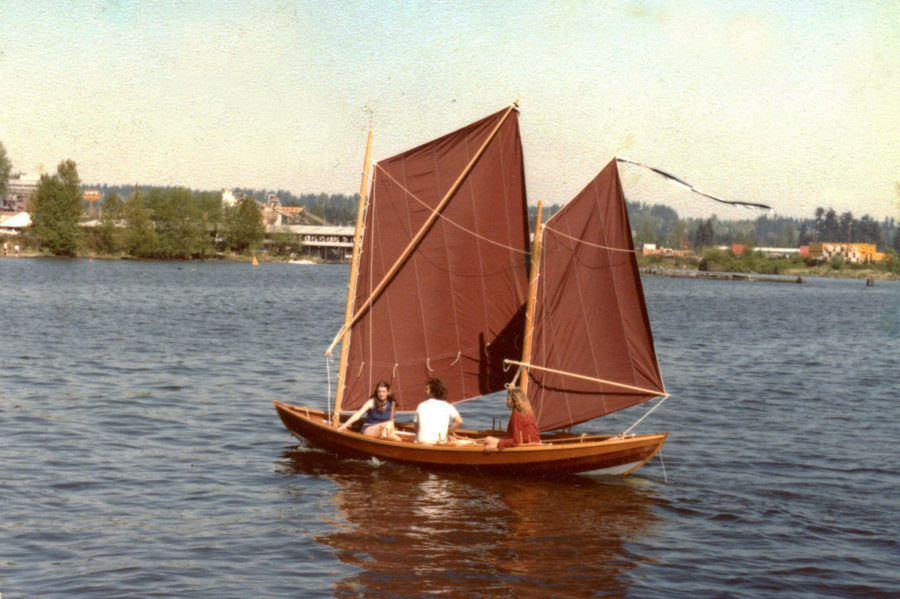
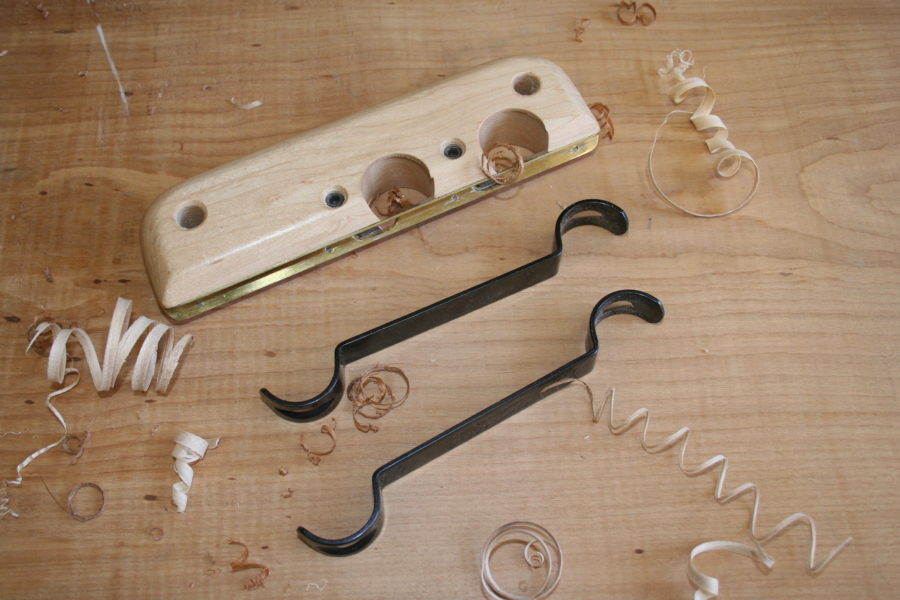
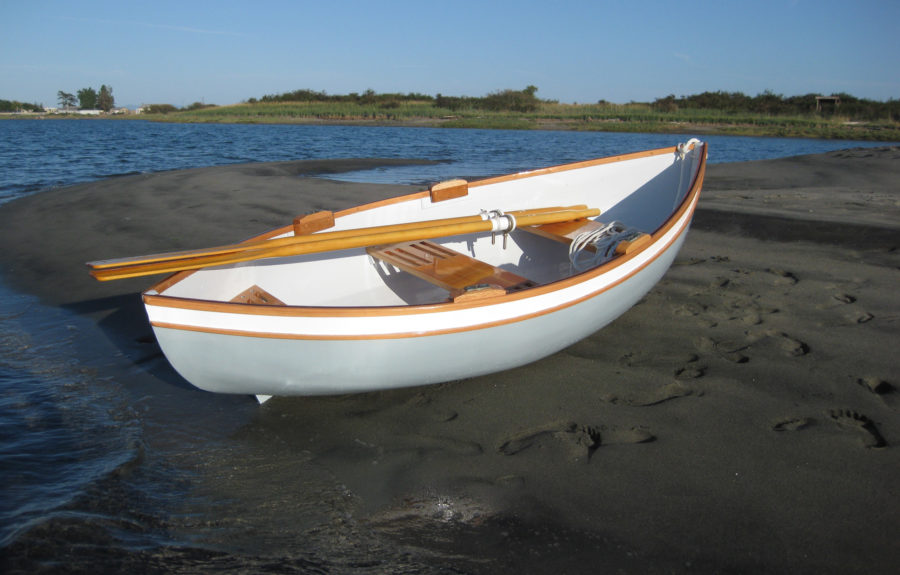

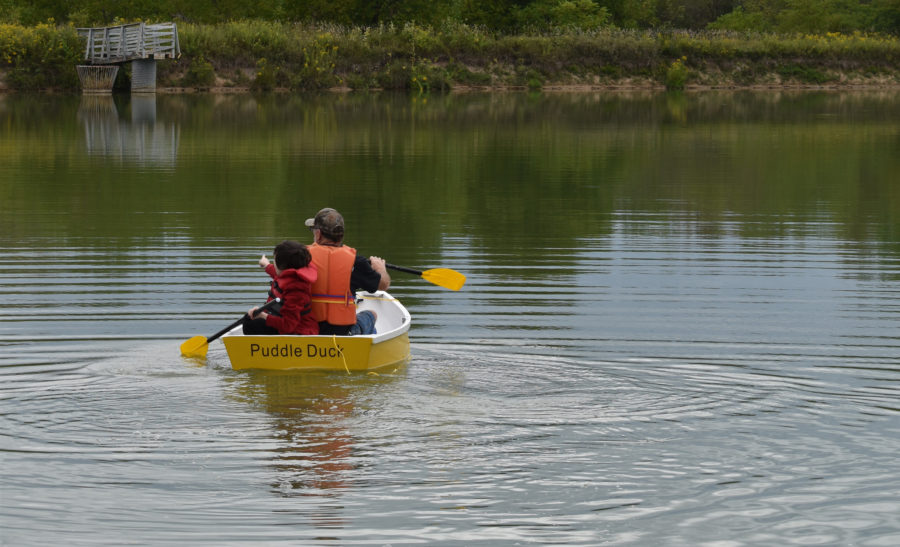
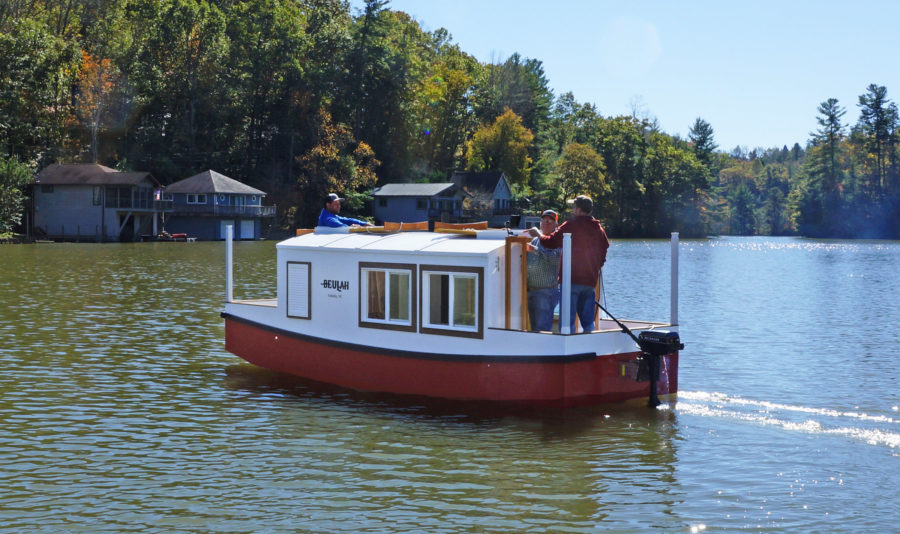
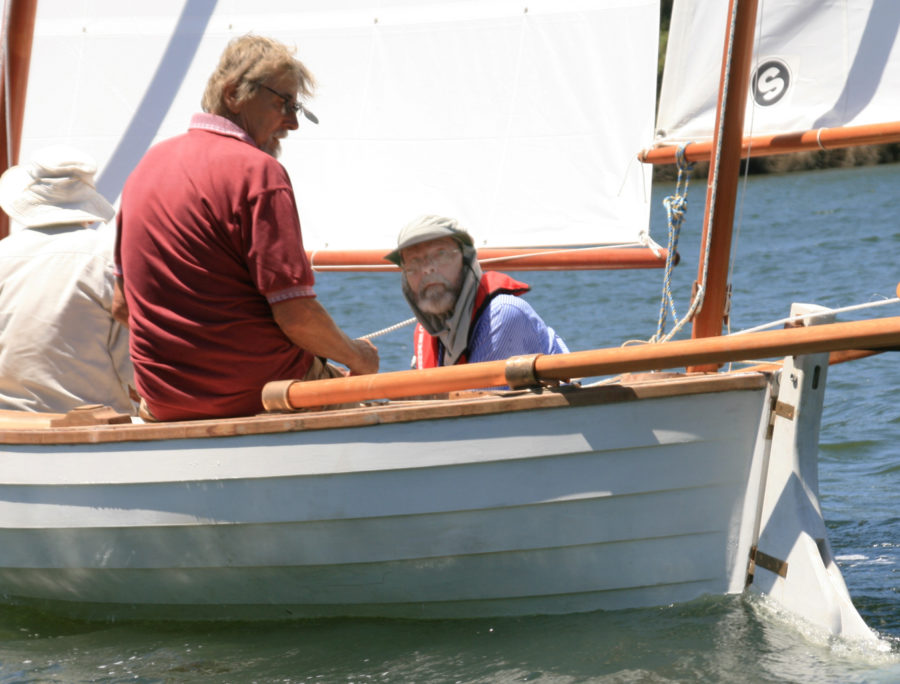
Join The Conversation
We welcome your comments about this article. If you’d like to include a photo or a video with your comment, please email the file or link.